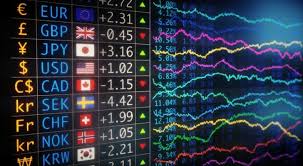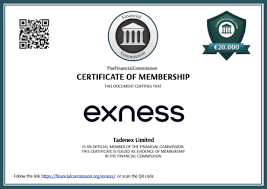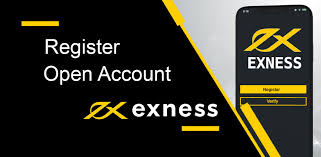
Mastering MT4 Forex Trading: A Comprehensive Guide
For many Forex traders, MetaTrader 4 (MT4) is the platform of choice due to its user-friendly interface and a wide range of features. Whether you are a novice or an experienced trader, understanding MT4 will significantly enhance your trading experience. In this article, we will explore the ins and outs of forex trading using MT4, including how to set up an account, understand the interface, and implement effective trading strategies. For more information on finding the mt4 forex trading Best Trading Brokers, continue reading.
What is MT4?
MetaTrader 4 (MT4) is a trading platform designed by MetaQuotes Software and is widely utilized in the Forex market. Launched in 2005, it provides users with the ability to execute trades, manage accounts, and analyze the performance of various currency pairs. The platform offers advanced charting capabilities, a plethora of technical indicators, automated trading through Expert Advisors (EAs), and much more.
Setting Up an Account
The first step to engaging in MT4 Forex trading is to set up an account. Here are the essential steps:
- Choose a Broker: Select a trustworthy broker that supports the MT4 platform. Look for reviews, regulations, and trading conditions to find a suitable option.
- Register for an Account: Visit the broker’s website and fill out the registration form. You’ll need to provide personal information and complete a verification process.
- Download MT4: After creating an account, download the MT4 platform directly from your broker’s website or the MetaQuotes site.
- Log In: Launch the MT4 application and log in using the account details provided by your broker.
Navigating the MT4 Interface
Understanding the MT4 interface is crucial for effective trading. Here are the main components:
- Market Watch: This window displays live prices for various currency pairs. You can add or remove pairs based on your trading preferences.
- Charting Window: The charting area allows you to visualize price movements. You can use different chart types, such as line, bar, or candlestick charts.
- Navigator: The Navigator window is where you can find your accounts, indicators, expert advisors, and scripts. It allows easy access to all your trading tools.
- Terminal: The terminal section provides essential information regarding your account balance, open positions, trading history, and alerts. It’s key for managing trades effectively.
Implementing Trading Strategies
Even with a robust platform like MT4, having a well-defined trading strategy is vital for success in Forex trading. Here are some effective strategies to consider:
1. Trend Following
Trend following is a strategy where you identify an upward or downward trend and make trades in the direction of that trend. This can be achieved through technical indicators like moving averages or the Average Directional Index (ADX). The aim is to capture profits as long as the trend remains intact.
2. Breakout Trading

Breakout trading focuses on a significant price level, either support or resistance, and involves placing trades when the price breaks through these levels. Traders often use tools like Bollinger Bands or Fibonacci retracement levels to identify potential breakout points.
3. Scalping
Scalping is a short-term trading strategy aimed at making small profits from minor price changes. Traders typically hold positions for just a few minutes or seconds, looking to capitalize on quick fluctuations. This strategy requires a high level of focus and quick decision-making.
4. Swing Trading
In swing trading, positions are held for several days to capture price changes that occur as the market swings. Traders analyze charts and use indicators to identify potential reversal points where the price could change direction.
Using Technical Indicators
MT4 is packed with a variety of technical indicators to assist traders in their analysis. Here are a few commonly used indicators:
- Moving Averages: Smooth out price data to identify trends over a specific period.
- Relative Strength Index (RSI): Measures the speed and change of price movements, typically used to identify overbought or oversold conditions.
- MACD (Moving Average Convergence Divergence): Shows the relationship between two moving averages of a security’s price to identify potential buys and sells.
- Bollinger Bands: Provides a relative definition of high and low prices, useful for identifying volatility.
Automating Trading with Expert Advisors (EAs)
One of the most powerful features of MT4 is its ability to automate trading through Expert Advisors (EAs). These are scripts programmed to execute trades based on predefined criteria. EAs can run in live or demo accounts and can handle multiple trades simultaneously, making them ideal for traders looking to optimize their strategies while minimizing emotional trading.
Risk Management Techniques
Effective risk management is essential in Forex trading. Here are some techniques you should implement:
- Use Stop Loss Orders: Always set stop-loss orders to limit potential losses on each trade.
- Position Sizing: Determine the size of your trade based on your account size and risk tolerance. This helps in managing exposure and protecting capital.
- Diversification: Avoid putting all your funds into one currency pair. Diversifying your trades can reduce risk.
Conclusion
Mastering MT4 Forex trading involves understanding the platform, creating and implementing effective strategies, using technical analysis tools, and managing risk properly. By applying these principles and continuously educating yourself, you can navigate the Forex market confidently and increase your chances of success. Whether you’re a beginner or an advanced trader, MT4 provides the functionalities you need to thrive in the dynamic world of Forex trading.



